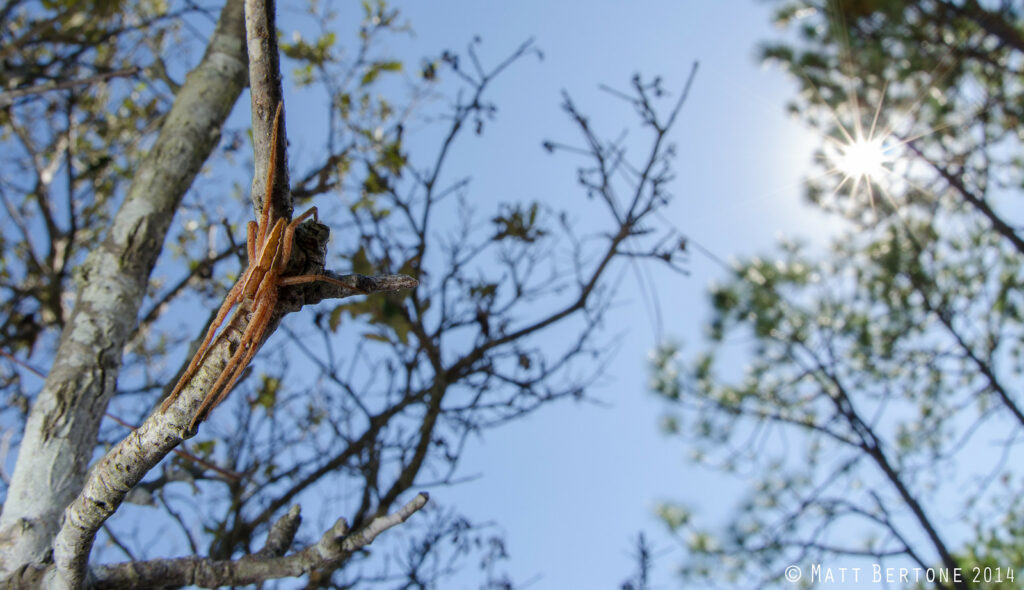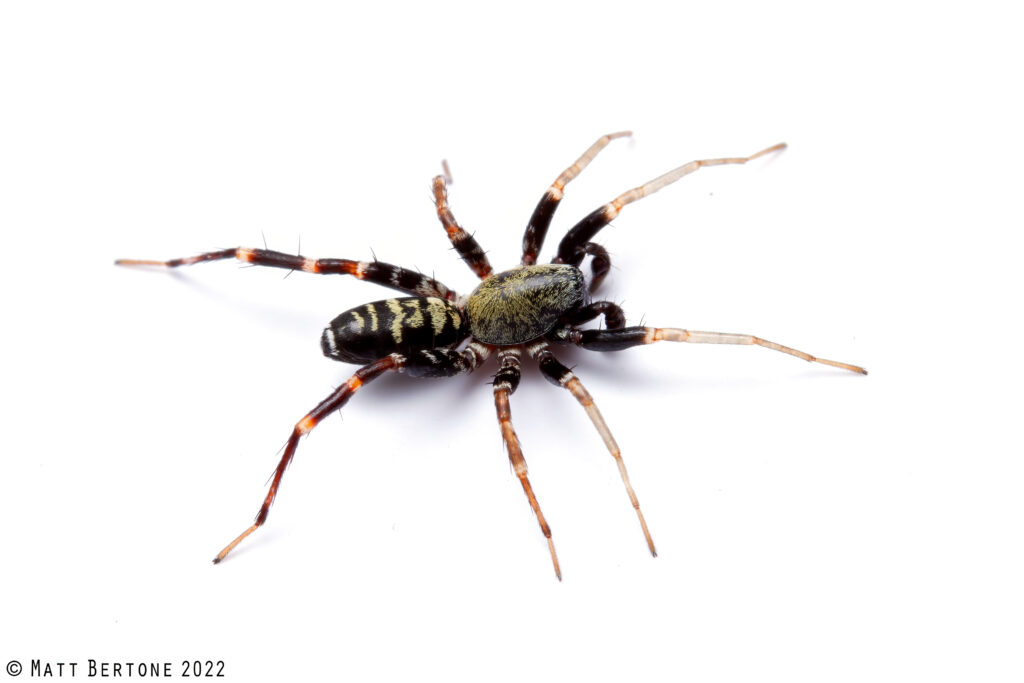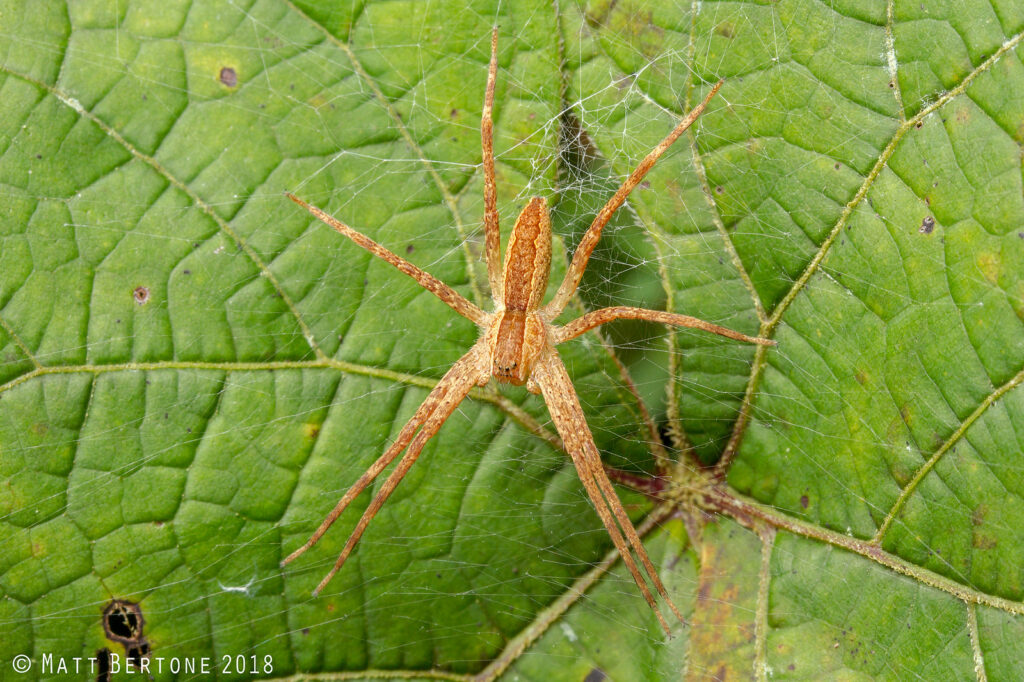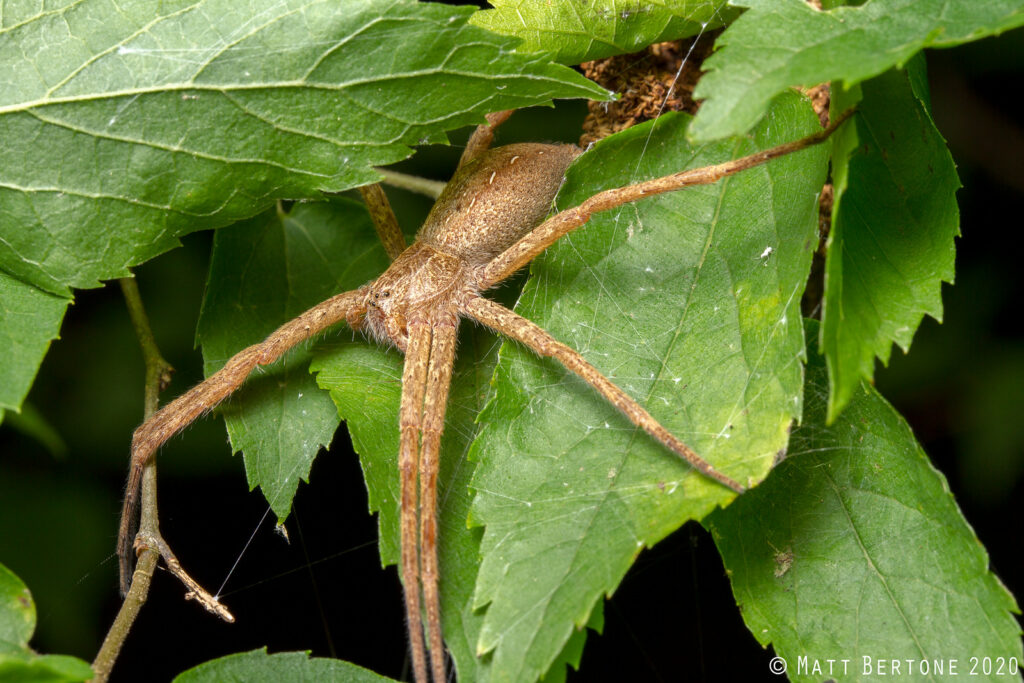Late Spring Spiders Common but Not Dangerous
go.ncsu.edu/readext?869250
en Español / em Português
El inglés es el idioma de control de esta página. En la medida en que haya algún conflicto entre la traducción al inglés y la traducción, el inglés prevalece.
Al hacer clic en el enlace de traducción se activa un servicio de traducción gratuito para convertir la página al español. Al igual que con cualquier traducción por Internet, la conversión no es sensible al contexto y puede que no traduzca el texto en su significado original. NC State Extension no garantiza la exactitud del texto traducido. Por favor, tenga en cuenta que algunas aplicaciones y/o servicios pueden no funcionar como se espera cuando se traducen.
Português
Inglês é o idioma de controle desta página. Na medida que haja algum conflito entre o texto original em Inglês e a tradução, o Inglês prevalece.
Ao clicar no link de tradução, um serviço gratuito de tradução será ativado para converter a página para o Português. Como em qualquer tradução pela internet, a conversão não é sensivel ao contexto e pode não ocorrer a tradução para o significado orginal. O serviço de Extensão da Carolina do Norte (NC State Extension) não garante a exatidão do texto traduzido. Por favor, observe que algumas funções ou serviços podem não funcionar como esperado após a tradução.
English
English is the controlling language of this page. To the extent there is any conflict between the English text and the translation, English controls.
Clicking on the translation link activates a free translation service to convert the page to Spanish. As with any Internet translation, the conversion is not context-sensitive and may not translate the text to its original meaning. NC State Extension does not guarantee the accuracy of the translated text. Please note that some applications and/or services may not function as expected when translated.
Collapse ▲ We’ve been getting a lot of inquiries about spiders hanging around and coming inside homes lately. Some have been mistaken for brown recluses (Loxosceles reclusa) despite this species being extremely rare in the state. Other spiders are active and a bit too fast for people’s liking.
We’ve been getting a lot of inquiries about spiders hanging around and coming inside homes lately. Some have been mistaken for brown recluses (Loxosceles reclusa) despite this species being extremely rare in the state. Other spiders are active and a bit too fast for people’s liking.
Several people have submitted images of nursery web spiders (Pisaurina mira). These medium to large spiders (see below) can be a bit scary due to their size and being mistaken for recluses. However they are not aggressive nor dangerous to humans. They are called nursery web spiders because the females often construct a nest made of leaves where they raise their young. They can be distinguished from recluses by their 8 eyes (6 in recluses), spiny legs (recluses have no thick spines) and patterns on the body (recluses have only a violin pattern on their “head”). More information on recluses and their ID can be found on the ReclusOrNot page at Spiderbytes.org.
The other group of spiders I’ve seen around quite a bit recently are the very active hunting spiders. There are several families, but ground spiders (Gnaphosidae) and antmimic/ground sac spiders (Corinnidae) are among the most common types encountered. They are lightning fast and may be very colorful or boldly patterned. Several species of Corinnidae are even confused for Australian red-back spiders (Australia’s black widow), though other than coloration their characteristics are very different.

A ground spider (Gnaphosidae) in the genus Sergiolus. They are quite nice looking, harmless spiders.

A ground sac spider (Corinnidae) in the genus Castianeira. They are quite nice looking, harmless spiders.
If these spiders are found in the home, don’t panic: they are harmless. Simply guide them out of the house or capture them safely to set free outdoors (they will appreciate it even if they can’t show it!). One additional tidbit for those working outdoors, relating to this type of spider: their egg sacs (below) are flattened discs laid on objects, usually in hidden-away spots. I am sure someone out there came across one of these and had no idea what it was!
We’re not sure why some species become more abundant some years and not others, but this seems to be a good (or bad-for-some, I guess) year for them. Spiders are essential members of our ecosystems and are generally harmless, while being good predators of pests.





